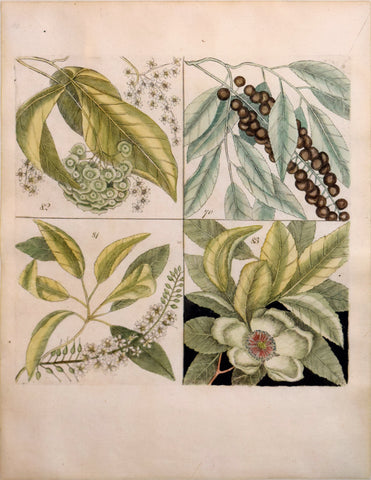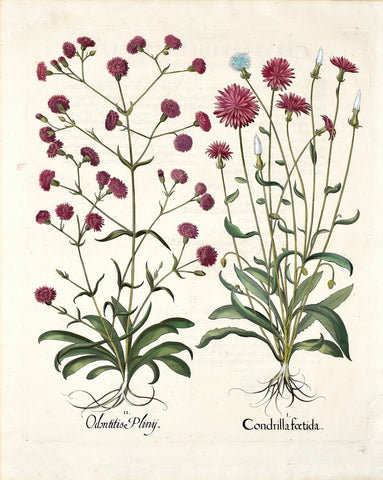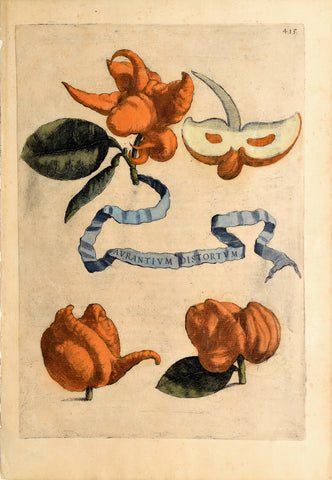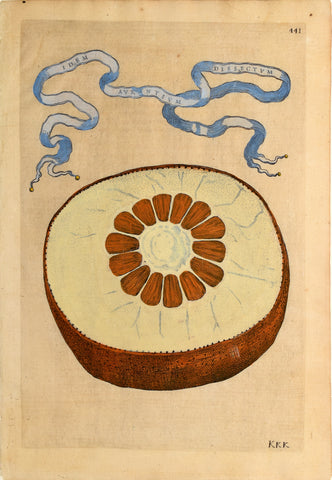
Mark Catesby (British, ca. 1679-1749), Plate 70, 81, 82, 83
Mark Catesby (British, ca. 1679-1749)
70. The Clustered Black Cherry; 81. Rowans or Whitebeams or Sorbs; 82. Dwarf Ginseng; 83. Japanese Stewartia
Georg Dionysius Ehret (German, 1708-1770), after
from Hortus Britanno-Americanus: or, a Curious Collection of Trees and Shrubs...
London, 1763
Copperplate engraving with original hand coloring
Paper size: 14 1/2" x 11"
Frame size: 24 x 20 ½”
Hortus Britanno-Americanus: or, A Curious Collection of Trees and Shrubs, the Produce of the British Colonies in North America; adapted to The Soil and Climate of England. With Observations on their Constitution, Growth, and Culture: and Directions how they are to be collected, packed up, and secured during their Passage.
These works are taken from Mark Catesby's rare posthumously-published guide to the seed-harvesting, transport, and cultivation in England of North American trees and shrubs. During the eleven years he spent in the Southeastern colonies of America (1712-19 and 1722-26) Catesby shipped to England an impressive quantity and variety of dried specimens as well as living seeds and plants, becoming in the process an expert in the difficult business of transatlantic shipping of botanical specimens. Later, during his years working on the Natural History of Carolina, Catesby's connections among prominent London naturalists enabled him to rally public interest in the cultivation in England of North American plants. He collaborated with several London nurserymen for the propagation and sale of his plants, notably Thomas Fairchild at Hoxton and Christopher Gray at Fulham. Gray's ca. 1737 broadsheet Catalogue of American Trees and Shrubs is illustrated with an engraving by Catesby of a magnolia, resembling the first plate of the Hortus and based on the same Ehret drawing.
Catesby illustrated 62 different trees and shrubs in this work. Although most of the plants had already been described in more general terms in the Natural History, Catesby's descriptions in the Hortus are more detailed and focus on such practicalities as the best conditions for harvesting seeds and for preserving them during the sea voyage. Concise but clear directions are provided for every step in the process (spelled out most explicitly for item no. 1, the magnolia, "which may serve [he explains in the preface] also as a direction for most of the rest"). For ease of reference, Catesby's engraved figures (most related to but not identical to the larger illustrations of the Natural History) reproduce the plants in actual size.
Although Sachaverell Sitwell suggests that an early version of the Hortus may have been issued in 1737, no copies of such an edition are known. In any case, as Henrey points out, "it is evident that Catesby was still preparing the work the year before he died, since in describing the catalpa tree [p. 25] he records that in August 1748 the profusion of flowers on a specimen at Mr. Gray's was so great that the leaves were almost hid thereby'" (Henrey II, 276). The London bookseller John Millan reissued the work in 1767, with a differently worded cancel title (Hortus Europae-Americanus), aiming the edition at the wider European market.
We Also Recommend





